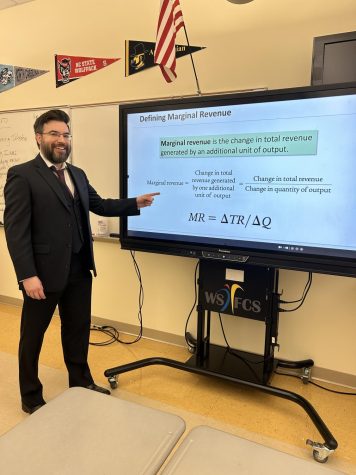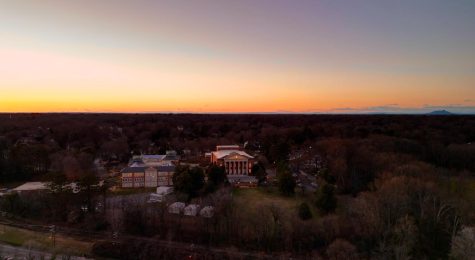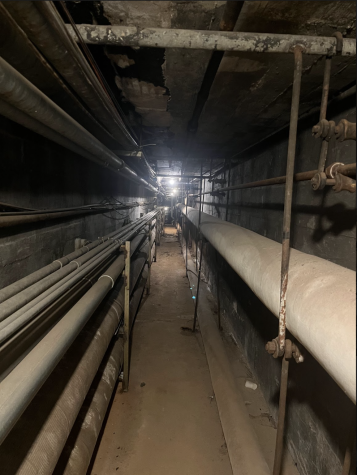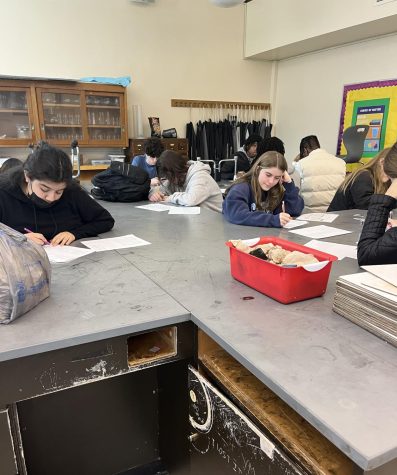Osiris-Rex

February 23, 2019
By Liam Sherman
On December 31, 2018, at 2:43 p.m. EST, history was made. The OSIRIS-REx spacecraft fired its thrusters for 8 seconds and entered orbit around the asteroid Bennu, the smallest object a man made spacecraft has ever orbited.
OSIRIS-REx (short for Origins, Spectral Interpretation, Resource Identification, Security-Regolith Explorer), launched on September 8, 2016, and spent a year orbiting the sun. On September 22, 2017, the eight foot wide cubicle spacecraft flew past the earth to get a gravity assist and acquire enough velocity to reach Bennu. By performing a gravity assist, the spacecraft essentially took some small part of the Earth’s orbital energy. In doing so, it increased its velocity enough to reach Bennu’s orbit. Bennu is traveling around the sun at an average of 63,000 mph.
On December 3, 2018, OSIRIS-REx came within two million kilometers of Bennu and began the process of matching its orbital velocity. It then began a series of small thruster firings to slowly bring it closer to Bennu. As the spacecraft approached Bennu, it began surveying its surface. It is doing this so it can both navigate using Bennu’s surface structure as a marker and so it can eventually find a site to collect a sample of the celestial body. By entering orbit of Bennu, OSIRIS-REx will be able to stay close to the body as it hurdles around the sun, while the spacecraft works to carry out the later stages of its mission.
Its goal is to, in 2020, collect a surface sample of Bennu’s regolith (outer layer). It will then exit Bennu’s orbit, fly by Earth, and jettison the sample into the atmosphere before entering a solar orbit. This sample will allow scientists to determine Bennu’s chemical makeup, which will help them learn more about the early composition of the solar system.
“I think what they’re specifically looking for is what kind of matter was actually present at the beginning of the solar system formation and a good understanding of what kind of elements were available for early solar system development,” environmental science teacher Eric Findeis said. “Specifically, whether there’s water especially in the form of ice on these things and whether there are organic molecules for the potential formation of life.”
Learning more about Bennu, though, will also help serve a secondary purpose. Bennu is an asteroid with a chance of impacting earth in the 22nd century and by studying its makeup scientists hope future generations will better be able to deflect it and some of the other countless pieces of rock hurtling through space around the sun.
While OSIRIS-REx has achieved orbit around Bennu, it still has challenges to face before its mission is a success. For one thing, due to Bennu’s extremely low gravitational pull, relatively minor forces like solar radiation and thermal pressure from Bennu push the spacecraft out of orbit. Corrective burns will be necessary to keep it in orbit for the next several years. Space travel is also to some degree inherently dangerous, as pointed out by senior Jordan Knudsen.
“Space is dangerous, and one small error like scrambling your 02 tanks [a reference to the cause of Apollo 13’s famous system failure] can cause a mission to fail,” Knudsen said.
Despite the challenges and dangers, news of OSIRIS-REx’s success so far marks a historic achievement. Its mission is one of discovery, and this discovery will hopefully inspire future generations to continue expanding and exploring the final frontier.
Photo Provided by Creative Commons












